Abstract
Statement of problem
A clinically successful color match is one of the important factor to get an esthetic dental restoration. Dental shade guides are commonly used to evaluate tooth color in restorative procedure. But numerous reports have indicated that common shade guides do not provide sufficient spectral coverage of the natural tooth colors. To address issues associated with the shade guide, distinct avenues have been pursued objective spectrophotometric / colorimetric assessment.
Purpose
This study compared the accuracy of tooth color selection of spectrophotometer with that of human visual determination. Three main factors were investigated, namely, the effect of light, the individual variation and the experience of the observer.
Material and methods
At the first experiment, on ten patients, one operator independently selected the best matching shade to the unrestored maxillary central incisor, using a Vita Classical Shade Guide in the morning, at noon and in the afternoon. The same teeth were measured by means of a reflectance spectrophotometer. At the second experiment, on ten patients, ten operators (5 experts, 5 novices) selected and measured by the same method above at noon. At the third experiment, the results of the second experiment were divided into two groups, expert and novice, and analyzed.
Results
1. There was significant difference between visual and spectrophotometric assessment (mean ΔE values) in experiment 1, 2, 3 (P < .05). 2. There was no significant difference between experts and novices group, when comparing with each visual and spectrophotometric assessment (mean ΔE values).
Conclusion
Spectrophotometer could be used to analyze the shade of natural tooth objectively. Thereby, this method offers the potential tominimize considerably the need for corrections or even remakesafter intraoral try-in of restoration. Furthermore, to achieve its advantage, both the shade-matching environment and communication between dentist and technician should be optimized with use of visual and instrumental shade-matching systems. (J Kor Acad Prosthodont 2008;46:443-55).
Go to : 
REFERENCES
1.Ishikawa-Nagai S., Sawafuji F., Tsuchitoi H., Sato RR., Ishibashi K. Using a computer color-matching system in color reproduction of porcelain restorations. part 2: color reproduction of stratiform-layered porcelain samples. Int J Prosthodont. 1993. 6:522–7.
2.Paul SJ., Peter A., Rodoni L., Pietrobon N. Conventional visual vs spectrophotometric shade taking for porcelain-fused-to-metal crowns: a clinical comparison. Int J Periodontics Restorative Dent. 2004. 24:222–31.

3.Paul S., Peter A., Pietrobon N., Hammerle CH. Visual and spectrophotometric shade analysis of human teeth. J Dent Res. 2002. 81:578–82.

4.Seghi RR., Johnston WM., O' Brien WJ. Performance assessment of colorimetric devices on dental porcelains. J Dent Res. 1989. 68:1755–9.

5.Yorty JS., Richard MW., Kanawati A., Davis S., House RC., Okubo SR. A simple screening test for color matching in dentistry. Gen Dent. 2000. 48:272–6.
6.Van der Burgt TP., Ten Bosch JJ., Borsboom PC., Kortsmit WJ. A comparison of new and conventional methods for quantification of tooth color. J Prosthet Dent. 1990. 63:155–62.

7.Tung FF., Goldstein GR., Jang SK., Hittelman E. The repeatability of an intraoral dental colorimeter. J Prosthet Dent. 2002. 88:585–90.

8.Ishigawa-Nagai S., Ishibashi K., Tsuruta O., Weber HP. Reproducibility of tooth color gradation using a computer color-matching technique applied to ceramic restorations. J Prosthet Dent. 2005. 93:129–37.
9.Chu SJ., Devigus A., Mieleszko AJ. Fundamentals of color. Quintessence Publishing Co, Inc;2004. p. 78–100.
10.Miller LL. Shade selection. J Esthet Dent. 1994. 6:47–60.
11.Kim HE., Cho IH., Lim JH., Lim HS. Shade analysis of anterior teeth using digital shade analysis system. J Kor Acad Prosthodont. 2003. 41:565–81.
12.Hammad IA. Intrarater repeatability of shade selections with two shade guides. J Prosthet Dent. 2003. 89:50–3.

13.Sproull RC. Color matching in dentistry. II. Practical applications of the organization of color. J Prosthet Dent. 1973. 29:556–66.
14.Preston JD. Current status of shade selection and color matching. Quintessence Int. 1985. 47–58.
15.Culpepper WD. A comparative study of shade-matching procedures. J Prosthet Dent. 1970. 24:166–73.

16.Klemetti E., Matela AM., Haag P., Kononen M. Shade selection performed by novice dental professionals and colorimeter. J Oral Rehabil. 2006. 33:31–5.

17.Analoui M., Papkosta E., Cochran M., Matis B. Designing visually optimal shade guides. J Prosthet Dent. 2004. 92:371–6.

18.Schwabacher WB., Goodkind RJ., Luah MJ. Interdependence of the hue, value, and chroma in the middle site of anterior human teeth. J Prosthod. 1994. 3:188–92.

19.Okubo SR., Alikanawati A., Richard MW., Childress S. Evaluation of visual and instrument shade matching. J Prosthet Dent. 1998. 80:642–8.

20.Chu SJ., Tarnow DP. Digital shade analysis and verification: A case report and discussion. Pract Proced Aesthet Dent. 2001. 13:129–36.
21.Douglas RD., Brewer JD. Variability of porcelain color reproduction by commercial laboratories. J Prosthet Dent. 2003. 90:339–46.

22.Dancy WK., Yaman P., Dennison JB., O' Brien WJ., Razoog ME. Color measurements as quality criteria for clinical shade matching of porcelain crowns. J Esthet Restor Dent. 2003. 15:114–21.

23.Barrett AA., Grimaudo NJ., Anusavice KJ., K. Yang MC. Influence of tab and disk design on shade matching of dental porcelain. J Prosthet Dent. 2002. 88:591–7.

24.Dozic A., Kleverlaan CJ., Meegdes M., Zel J., Feilzer AJ. The influence of porcelain layer thickness on the final shade of ceramic restorations. J Prosthet Dent. 2003. 90:563–70.
Go to : 
Table I.
Results of shade analysis evaluated with Vita classic shade guide and spectrophotometer of experiment 1
Table II.
Mean shade and ΔE values assessed either by human evaluator or by spectrophotometric readings of experiment 1
Table III.
Results of Wilcoxon Signed Ranks Test of experiment 1
| Visual (Mean ΔE) | Spectrophotometer (Mean ΔE) | P value | |
|---|---|---|---|
| Experiment 1 | 4.57 | 1.98 | 0.007 |
Table IV.
Results of shade analysis evaluated with Vita classic shade guide and spectrophotometer of experiment 2
Table V.
Mean shade and ΔE values assessed either by human evaluator or by spectrophotometric readings of experiment 2
Table VI.
Results of Wilcoxon Signed Ranks Test of experiment 2
| Visual (Mean ΔE) | Spectrophotometer (Mean ΔE) | P value | |
|---|---|---|---|
| Experiment 2 | 3.55 | 2.05 | 0.005 |
Table VII.
Results of shade analysis of expert group evaluated with Vita classic shade guide and spectrophotometer of experiment 3
Table VIII.
Mean shade and ΔE values assessed either by expert group or by spectrophotometric readings
Table IX.
Results of Wilcoxon Signed Ranks Test for expert group of experiment 3
| Visual (Mean ΔE) | Spectrophotometer (Mean ΔE) | P value | |
|---|---|---|---|
| Experiment 3 (Expert) | 3.89 | 2.07 | 0.005 |
Table X.
Results of shade analysis of novice group evaluated with Vita classic shade guide and spectrophotometer of experiment 3
Table XI.
Mean shade and ΔE values assessed either by novice group or by spectrophotometric readings




 PDF
PDF ePub
ePub Citation
Citation Print
Print


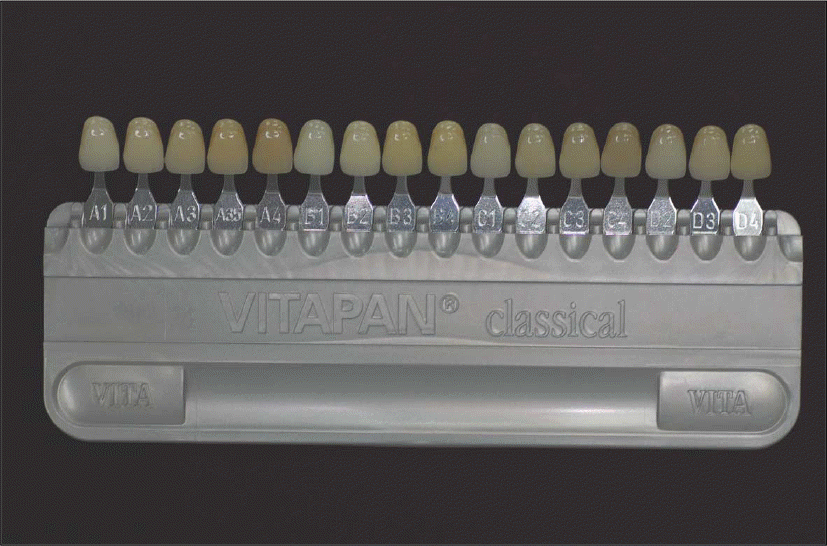
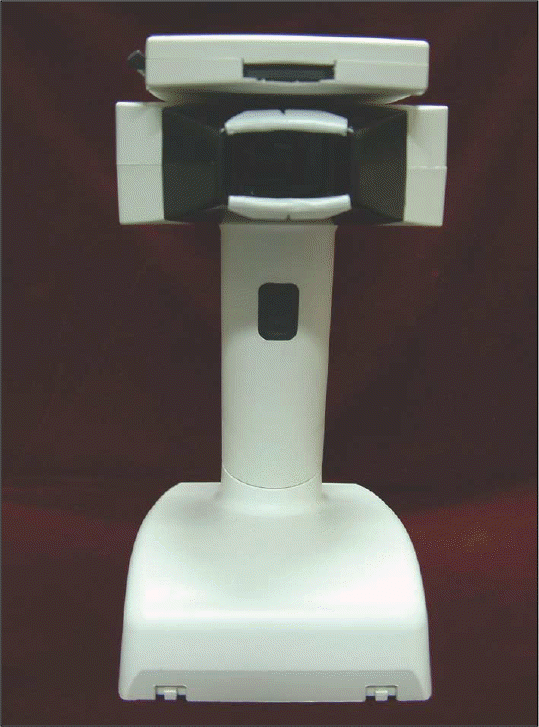
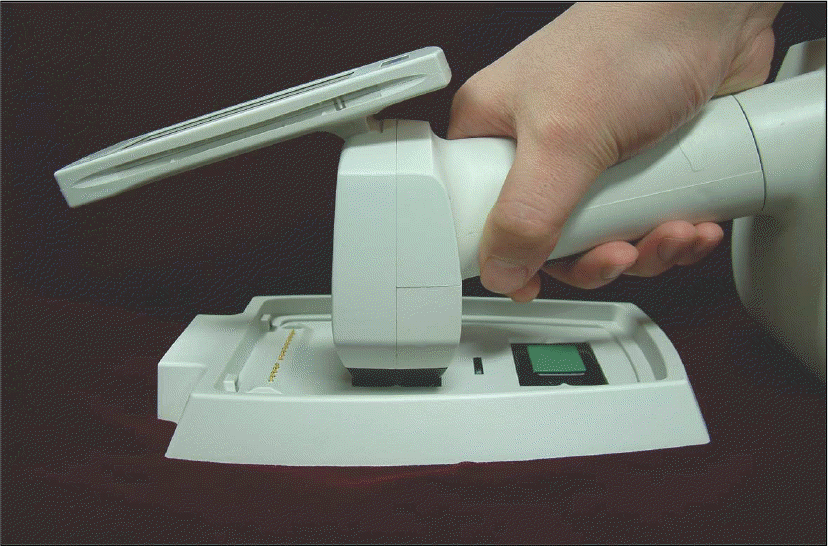
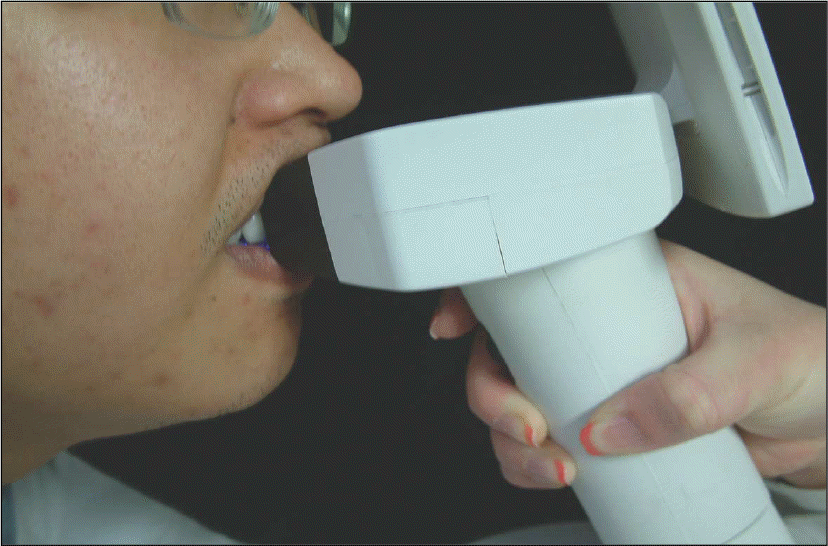

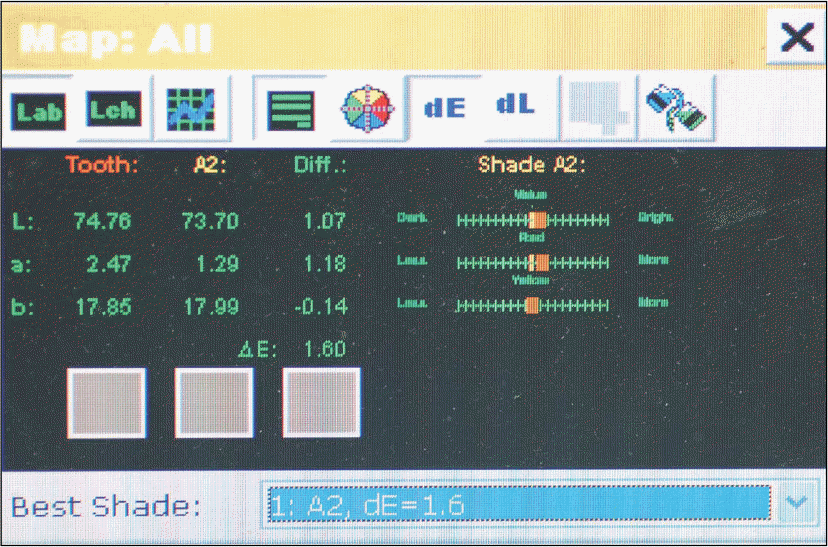
 XML Download
XML Download